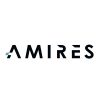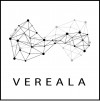 Wrapping goods in packaging material is a necessity for transporting, protecting, labelling and advertising goods. Different types of nanotechnologies and nanomaterials can be used to create or improve a number of packaging characteristics that are important for the packager or for the packaged goods. Nanoapplications can create stronger and lighter materials, improve biodegradability or recyclability, incorporate sensors or indicators for consumer information, or be used for traceability or authentication (product security to avoid fraud).
Wrapping goods in packaging material is a necessity for transporting, protecting, labelling and advertising goods. Different types of nanotechnologies and nanomaterials can be used to create or improve a number of packaging characteristics that are important for the packager or for the packaged goods. Nanoapplications can create stronger and lighter materials, improve biodegradability or recyclability, incorporate sensors or indicators for consumer information, or be used for traceability or authentication (product security to avoid fraud).
The packaging sector already benefit from the use of nanotechnology and nanomaterials; an example is natural clays that have been added to packaging to improve characteristics such as strength, coating and barrier properties. Nanomaterials can reinforce biodegradable packaging, reduce the number of different materials used to facilitate recycling, and change the permeability to gases. In the food sector, improved food contact materials can extended shelf life, reduce the use of preservative and provide more hygienic and easy-to-clean non-stick surfaces that prevent biofilm formation.
In the European Union, there are several important regulations that directly or indirectly cover packaging; notable REACH (EC) No 1907/2006 that covers chemical substances that can be used for manufacturing packaging. In addition there are more specific regulations that covers materials in contact with foods. Examples are e.g.:
- Framework Regulation (EC) No 1935/2004 on materials and articles intended to come into contact with food, sets out the main rules for food contact materials. This regulation is complemented with a number of more specific legal acts, such as:
- Regulation (EC) No 450/2009 on active and intelligent packaging, and
- Regulation (EU) No 10/2011 on plastic materials and articles intended to come into contact with food.
The RefNanoCLAYM is a public-private-partnership project, initiated and led by NIA in support of its Members aiming to test a naturally occurring clay (bentonite) with regard to the safety characteristic endpoints agreed under the OECD WPMN Sponsorship Programme. Nanoclays are added to packaging, in order to improve barrier properties by enhancing gas impermeability. The project investigated, in a step-wise approach, the environmental fate and ecotoxicological behaviour of the nanoclays.
Support for NIA Members:
NIA provides specific support to its Members in the Food Contact & Packaging Sector.



















